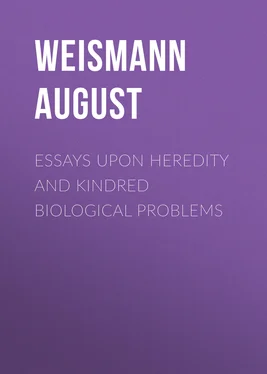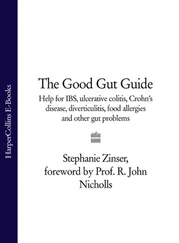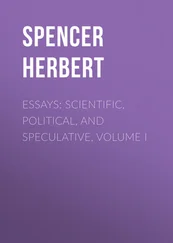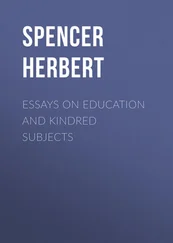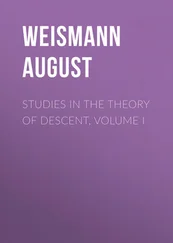August Weismann - Essays Upon Heredity and Kindred Biological Problems
Здесь есть возможность читать онлайн «August Weismann - Essays Upon Heredity and Kindred Biological Problems» — ознакомительный отрывок электронной книги совершенно бесплатно, а после прочтения отрывка купить полную версию. В некоторых случаях можно слушать аудио, скачать через торрент в формате fb2 и присутствует краткое содержание. Жанр: foreign_antique, Биология, на английском языке. Описание произведения, (предисловие) а так же отзывы посетителей доступны на портале библиотеки ЛибКат.
- Название:Essays Upon Heredity and Kindred Biological Problems
- Автор:
- Жанр:
- Год:неизвестен
- ISBN:нет данных
- Рейтинг книги:5 / 5. Голосов: 1
-
Избранное:Добавить в избранное
- Отзывы:
-
Ваша оценка:
- 100
- 1
- 2
- 3
- 4
- 5
Essays Upon Heredity and Kindred Biological Problems: краткое содержание, описание и аннотация
Предлагаем к чтению аннотацию, описание, краткое содержание или предисловие (зависит от того, что написал сам автор книги «Essays Upon Heredity and Kindred Biological Problems»). Если вы не нашли необходимую информацию о книге — напишите в комментариях, мы постараемся отыскать её.
Essays Upon Heredity and Kindred Biological Problems — читать онлайн ознакомительный отрывок
Ниже представлен текст книги, разбитый по страницам. Система сохранения места последней прочитанной страницы, позволяет с удобством читать онлайн бесплатно книгу «Essays Upon Heredity and Kindred Biological Problems», без необходимости каждый раз заново искать на чём Вы остановились. Поставьте закладку, и сможете в любой момент перейти на страницу, на которой закончили чтение.
Интервал:
Закладка:
Eleodes grandis and E. dentipes . Eight of these beetles from California were kept in confinement and without food for two years by Dr. Gissler, of Brooklyn; they were then sent to Dr. Hagen who kept them another year.
Goliathus cacicus. One individual lived in a hot-house for five months.
In addition to these cases, Dr. Hagen writes to me: ‘Among the beetles which live for more than a year,— Blaps , Pasimachus , ( Carabidae )—and among ants, almost thirty per cent. are found with the cuticle worn out and cracked, and the powerful mandibles so greatly worn down that species were formerly founded upon this point. The mandibles are sometimes worn down to the hypodermis.’
From the data before me I am inclined to believe that in certain beetles the normal length of life extends over some years, and this is especially the case with the Blapidae . It seems probable that in these cases another factor is present,—a vita minima , or apparent death, a sinking of the vital processes to a minimum in consequence of starvation, which we might call the hunger sleep, after the analogy of winter sleep. The winter sleep is usually ascribed to cold alone, and some insects certainly become so torpid that they appear to be dead when the temperature is low. But cold does not affect all insects in this way. Among bees, for example, the activity of the insects diminishes to a marked extent at the beginning of winter, but if the temperature continues to fall, they become active again, run about, and as the bee-keepers say, ‘try to warm themselves by exercise’; by this means they keep some life in them. If the frost is very severe, they die. In the tropics the period of hibernation for many animals coincides with the time of maximum heat and drought. This shows that the organism can be brought into the condition of a vita minima in various ways, and it would not be at all remarkable if such a state were induced in certain insects by hunger. Exact experiments however are the only means by which such a suggestion can be tested, and I have already commenced a series of experiments. The fact that certain beetles live without food for many years (even six) can hardly be explained on any other supposition, for these insects consume a fair amount of food under normal conditions, and it is inconceivable that they could live for years without food, if the metabolism were carried on with its usual energy.
A very striking example, showing that longevity may be induced by the lengthening of the period of reproductive activity, is communicated to me by Dr. Adler in the following note: ‘Three years ago I accidentally noticed that ovoviviparous development takes place in Chrysomela varians ,—a fact which I afterwards discovered had been already described by another entomologist.
‘The egg passes through all the developmental stages in the ovary; when these are completed the egg is laid, and a minute or two afterwards the larva breaks through the egg-shell. In each division of the ovary the eggs undergo development one at a time; it therefore follows that they are laid at considerable intervals, so that a long life becomes necessary in order to ensure the development of a sufficiently long series of eggs. Hence it comes about that the females live a full year. Among other species of Chrysomela two generations succeed each other in a year, and the duration of life in the individual varies from a few months to half a year.’
VIII. Hymenoptera
Cynipidae. I have been unable to find any accurate accounts of the duration of life in the imagos of saw-flies or ichneumons; but on the other hand I owe to the kindness of Dr. Adler, an excellent observer of the Cynipidae , the precise accounts of that family which are in my possession. I asked Dr. Adler the general question as to whether there was any variation in the duration of life among the Cynipidae corresponding to the conditions under which the deposition of eggs took place; whether those species which lay many eggs, or of which the oviposition is laborious and protracted, lived longer than those species which lay relatively few eggs, or easily and quickly find the suitable places in which to deposit them.
Dr. Adler fully confirmed my suppositions and supported them by the following statements:—
‘The summer generation of Neuroterus ( Spathegaster ) has the shortest life of all Cynipidae . Whether captured or reared from the galls I have only kept them alive on an average for three to four days. In this generation the work of oviposition requires the shortest time and the least expenditure of energy, for the eggs are simply laid on the surface of a leaf. The number of eggs in the ovary is also smaller than that of other species, averaging about 200. This form of Cynips can easily lay 100 eggs a day.
‘The summer generation of Dryophanta ( Spathegaster Taschenbergi , verrucosus , etc.) lives somewhat longer; I have kept them in confinement for six to eight days. The oviposition requires a considerable expenditure of time and strength, for the ovipositor has to pierce the rather tough mid-rib or vein of a leaf. The number of eggs in the ovary averages 300 to 400.
‘The summer generation of Andricus , which belongs to the extensive genus Aphilotrix , have also a long life. I have kept the smaller Andricus (such as A. nudus , A. cirratus , A. noduli ) alive for a week, and the larger ( A. inflator , A. curvator , A. ramuli ) for two weeks. The smaller species pierce the young buds when quite soft, but the larger ones bore through the fully grown buds protected by tough scales. The ovary of the former contains 400 to 500 eggs, that of the latter over 600.
‘The agamic winter generations live much longer. The species of Neuroterus have the shortest life; they live for two weeks at the outside; on the other hand, species of Aphilotrix live quite four weeks, and Dryophanta and Biorhiza even longer. I have kept Dryophanta scutellaris alive for three months. The number of eggs in these agamic Cynipidae is much larger: Dryophanta and Aphilotrix contain 1200 and Neuroterus about 1000.’
It is evidently, therefore, a general rule that the duration of life is directly proportional to the number of eggs and to the time and energy expended in oviposition. It must of course be understood that, here as in all other instances, these are not the only factors which determine the duration of life, but many other factors, at present unknown, may be in combination with them and assist in producing the result. For example, it is very probable that the time of year at which the imagos appear exerts some indirect influence. The long-lived Biorhiza emerges from the gall in the middle of winter, and at once begins to deposit eggs in the oak buds. Although the insect is not sensitive to low temperature, for I have myself seen oviposition proceeding when the thermometer stood at 5° R., yet very severe frost would certainly lead to interruption and would cause the insect to shelter itself among dead leaves on the ground. Such interruptions may be of long duration and frequently repeated, so that the remarkably long life of this species may perhaps be looked upon as an adaptation to its winter life.
Ants. Lasius flavus lays its eggs in the autumn, and the young larvae pass the winter in the nest. The males and females leave the cocoons in June, and pair during July and August. The males fly out of the nest with the females, but they do not return to it; ‘they die shortly after pairing.’ It is also believed that the females do not return to the nest, but found new colonies; this point is however one of the most uncertain in the natural history of ants. On the other hand it is quite certain that the female may live for years within the nest, continuing to lay fertilized eggs. Old females are sometimes found in the colony, with their jaws worn down to the hypodermis.
Читать дальшеИнтервал:
Закладка:
Похожие книги на «Essays Upon Heredity and Kindred Biological Problems»
Представляем Вашему вниманию похожие книги на «Essays Upon Heredity and Kindred Biological Problems» списком для выбора. Мы отобрали схожую по названию и смыслу литературу в надежде предоставить читателям больше вариантов отыскать новые, интересные, ещё непрочитанные произведения.
Обсуждение, отзывы о книге «Essays Upon Heredity and Kindred Biological Problems» и просто собственные мнения читателей. Оставьте ваши комментарии, напишите, что Вы думаете о произведении, его смысле или главных героях. Укажите что конкретно понравилось, а что нет, и почему Вы так считаете.
